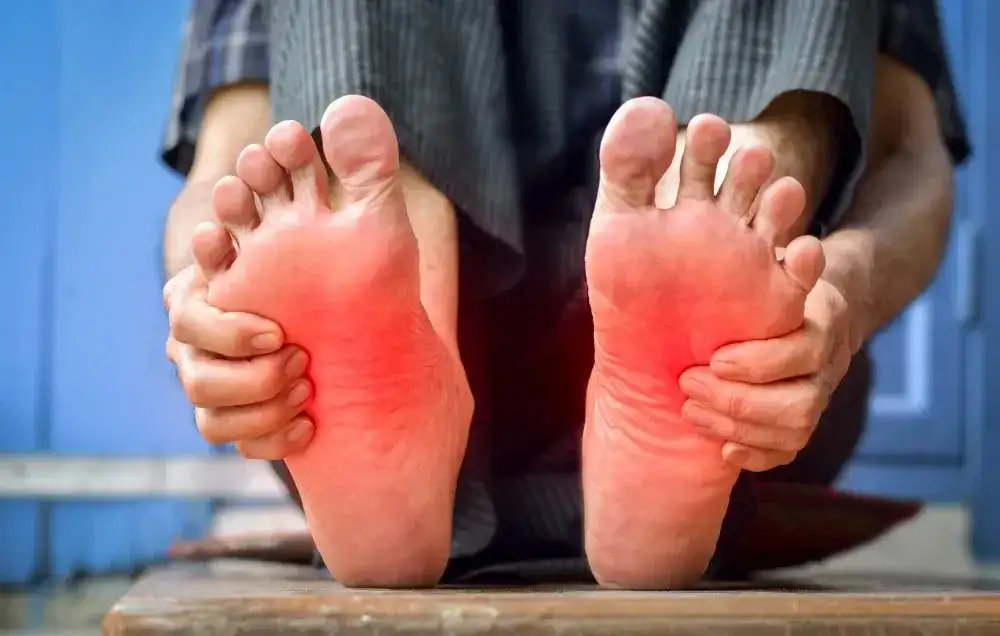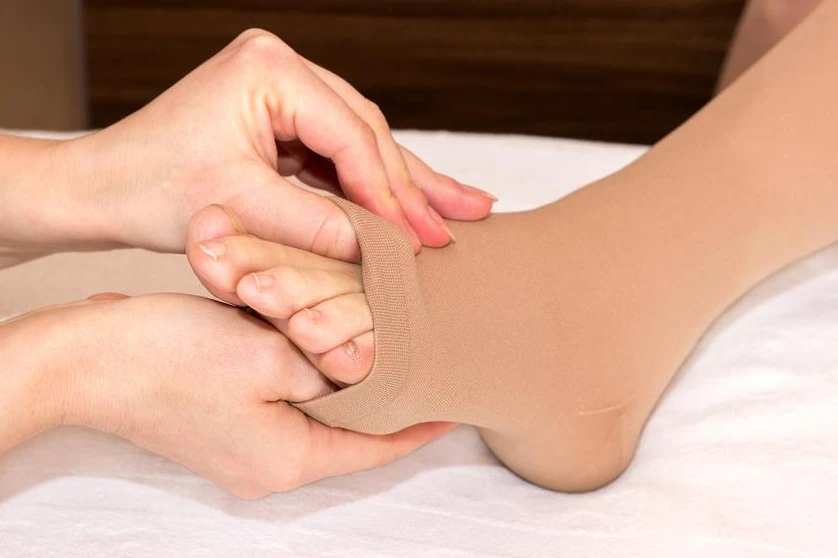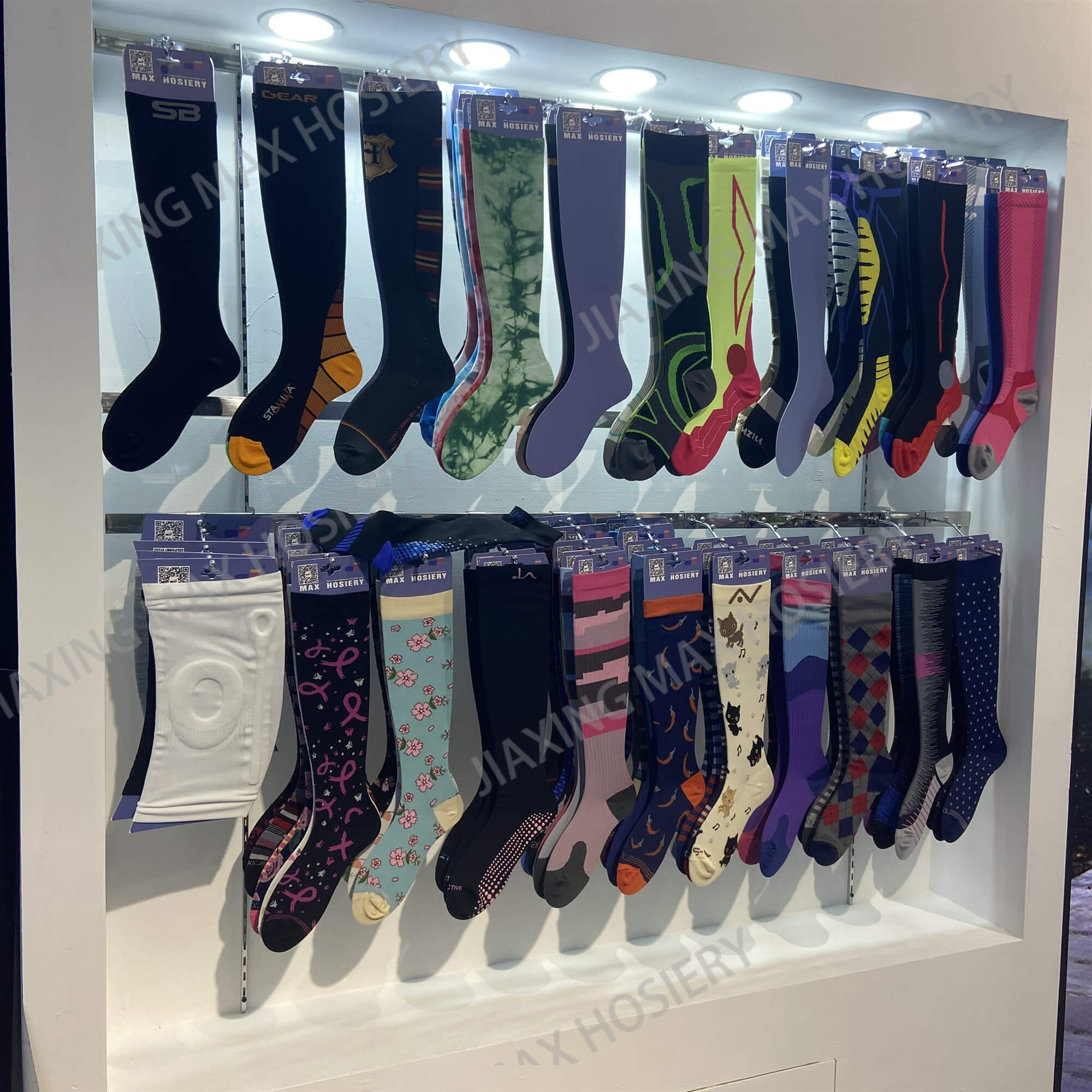
Neuropathy is a growing health concern, causing pain, numbness, and reduced mobility for millions worldwide. As more people seek non-invasive solutions, compression socks are gaining attention for their ability to improve circulation and alleviate nerve pain. But with the rise in demand for specialized health products, do compression socks specifically designed for neuropathy offer real market potential? Let’s explore why these socks are gaining traction—and why now may be the perfect time to seize this growing opportunity.
The Role of Compression Socks in Managing Neuropathy

How do Neuropathy Compression Socks Work?
Neuropathy compression socks are a little different from regular compression socks, applying graduated pressure—firmest at the ankle, gradually decreasing up the leg—to improve circulation, reduce swelling, and ease discomfort. This non-invasive approach helps blood return to the heart and alleviates symptoms like pain and numbness commonly experienced by neuropathy sufferers.
Benefits for Neuropathy Patients
For those with neuropathy, enhanced blood flow delivers more oxygen and nutrients to nerves, potentially reducing pain, tingling, and inflammation. The gentle compression also produces a subtle massaging effect, reducing fatigue and boosting comfort.
Market Trends: Why Compression Socks for Neuropathy Are Gaining Popularity

Compression Therapy Market Growth
The broader compression therapy sector is predicted to climb from USD 3.02 billion in 2018 to USD 6.62 billion by 2032, at a CAGR of 5.9%.
Compression Socks Surge
Globally, the compression socks market is expected to reach ~USD 752 million by 2025, increasing to over USD 1.05 billion by 2032, with CAGR of 4.3%. A similar projection from another source forecasts growth from USD 985.8 million in 2025 to USD 1.26 billion by 2032.
New opportunity come with the diabetic therapy market
Among all neuropathy types, diabetic peripheral neuropathy (DPN) is the most common. It affects up to 50% of adults with diabetes during their lifetime. This makes diabetic neuropathy a major subcategory within the broader neuropathy market and a critical segment for compression sock demand.
Market Data for Diabetic Socks (Supports Neuropathy Market Potential):
- Market value reached USD 251.3 million in 2024, with a projected CAGR of 7.1% through 2030.
- Another forecast predicts the market doubling to USD 508.3 million by 2034, at a CAGR of 7.2%.
These figures underscore how demand from the diabetic neuropathy demographic drives growth in specialized compression sock segments and validate the broader potential of neuropathy equipment.
Who Are the Target Customers for Compression Socks for Neuropathy?

- Chemotherapy treatments, especially in cancer patients
- Chronic alcohol use (alcoholic neuropathy)
- Autoimmune conditions like lupus and rheumatoid arthritis
- Idiopathic cases, common in older adults with no clear cause
- Hereditary disorders such as Charcot-Marie-Tooth disease
Adults over 50, but younger individuals with poor circulation, physically demanding jobs, or long periods of sitting or standing also experience symptoms. As a result, the target audience includes seniors, workers, caregivers, and even athletes seeking recovery support.
Key Factors That Influence Buying Decisions
Compression level (mild to firm), material softness, and sizing options all affect purchasing decisions. Informing customers about how compression therapy helps neuropathy can improve conversion, especially if you address both functional needs and comfort.
Product Features: What Makes Compression Socks Effective for Neuropathy?
The Right Compression Level and Material
The effectiveness of compression socks for neuropathy depends on two main elements—compression level and fabric. A range of 15–30 mmHg is commonly used to support blood flow and reduce swelling in the feet and lower legs. This pressure range strikes a balance between support and comfort, especially for those dealing with nerve-related issues.
Equally important is material. Fabrics like nylon, spandex, and cotton blends provide breathability, moisture-wicking, and soft texture, making them suitable for extended wear. For neuropathy patients with sensitive skin, the fabric must reduce irritation and prevent friction.
Design Considerations: Comfort, Durability, and Style
Compression socks must be designed for long-term wear. Soft seams, non-binding cuffs, and targeted compression zones improve comfort—critical for users with nerve pain or skin sensitivity. High durability is also important; socks should maintain elasticity and pressure after repeated washing.
Style matters more than some might assume. Offering multiple colors and lengths appeals to a broader demographic, especially for customers who wear these socks daily. A visually acceptable product increases the chance of regular use, which in turn enhances long-term results.
The Importance of Size, Fit, and Customer Personalization
Proper sizing is a must. Ill-fitting socks can either restrict blood flow or fail to provide enough compression. A broad size range helps brands accommodate diverse body types and foot shapes.
Challenges and Considerations in the Compression Sock Market
- https://www.icompressionsocks.com/certification/Regulatory Hurdles:
Compression socks designed for medical use fall under strict regulations. Securing certifications like the FDA approval in the U.S. or CE marking in Europe is essential. These approvals not only confirm safety and efficacy but also open doors to healthcare partnerships and professional endorsements.
So when choosing factories or manufacturers, make sure they comply with relevant regulations. For a detailed guide, check out our article on how to find a reliable compression sock supplier. - Educating the Market:
Compression therapy is effective, but many consumers and healthcare providers still lack clear understanding of its benefits. Brands that invest in educational marketing—through detailed content, visual aids, and expert testimonials—can differentiate themselves. Educated buyers are more confident, more loyal, and more likely to recommend products, which accelerates growth.
Future Outlook: Why Now Is the Right Time to Invest in Compression Socks for Neuropathy

Market forecasts indicate healthy growth, with consistent increases in sales driven by greater awareness and adoption. For brands and retailers, this means expanding opportunities to meet rising consumer needs.
Focusing on high-quality, comfortable, and well-fitted compression socks is key to capturing this market. Providing clear information about the benefits and usage of compression therapy will also help build trust and encourage purchases.
Conclusion
The compression sock market holds strong potential as consumers increasingly prioritize wellness and non-invasive solutions. With advancements in technology and a growing interest in self-care, now is an ideal time for brand owners and wholesalers to enter the market. By offering high-quality, customizable products and educating consumers on their benefits, brands can tap into this expanding market
As a professional compression socks manufacturer, we are ready to partner with brands and retailers to provide top-quality, effective solutions. Start building your compression sock business now and meet the growing demand for non-invasive solutions.
FAQs
Are compression socks good for neuropathy?
Compression socks improve circulation and reduce swelling, helping to alleviate pain and discomfort caused by neuropathy and other circulatory issues.
Are compression socks for neuropathy regulated as health and safety products?
Yes, compression socks marketed for therapeutic use must meet specific health and safety standards, which vary by region, including FDA approval or CE marking.
What are the key trends driving the neuropathy compression sock market?
The shift towards proactive health management, increased demand for non-invasive solutions, and technological advancements, like smart fabrics, are fueling market growth.
How can new brands succeed in the neuropathy compression sock market?
New brands can stand out by offering customized compression socks for neuropathy, educating consumers about the benefits of compression therapy, and focusing on high-quality materials and design.
What steps should I take to start a compression sock business?
Focus on regulatory compliance, create differentiated products, build a reliable supply chain, and invest in consumer education to succeed in the compression sock market.
